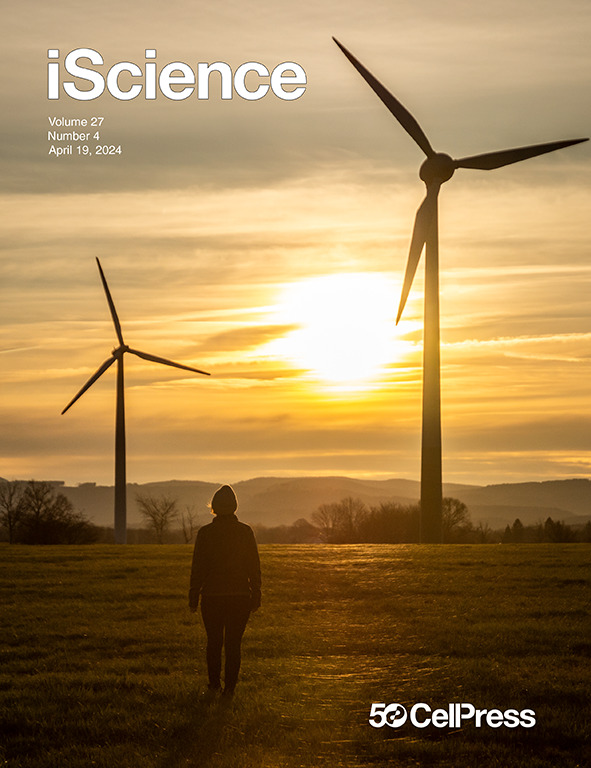内皮活化转录因子3促进小鼠视网膜血管生成和血管修复。
IF 4.6
2区 综合性期刊
Q1 MULTIDISCIPLINARY SCIENCES
引用次数: 0
摘要
视网膜血管疾病的缺血和病理性血管生成引起严重的视力问题。然而,血管修复的转录调节因子仍未被发现。因此,必须阐明血管生成的因素和机制,以开发恢复正常血管的方法。在此,我们研究了应激反应激活转录因子3 (ATF3)对体外和体内血管生成和血管再生的影响。在血管发育过程中,ATF3在视网膜血管内皮细胞(ECs)中特异性表达。血管内皮生长因子刺激可上调培养内皮细胞中ATF3的表达。体外和体内实验中,ECs中ATF3表达下调导致血管网络形成恶化。此外,在氧诱导视网膜病变模型中,ATF3缺失抑制视网膜血管修复,但不抑制病理性新生血管形成。转录组分析证实,ATF3的高表达上调了内皮细胞血管生成相关基因的表达。ATF3可能有助于视网膜血管疾病的血管修复治疗。本文章由计算机程序翻译,如有差异,请以英文原文为准。

Endothelial activating transcription factor 3 promotes angiogenesis and vascular repair in the mouse retina
Ischemia and pathological angiogenesis in retinal vascular diseases cause serious vision-related problems. However, the transcriptional regulators of vascular repair remain unidentified. Thus, the factors and mechanisms involved in angiogenesis must be elucidated to develop approaches for restoring normal blood vessels. Here, we investigated the effects of the stress response activating transcription factor 3 (ATF3) on angiogenesis and vascular regeneration in vitro and in vivo. ATF3 was expressed specifically in retinal vascular endothelial cells (ECs) during vascular development. Vascular endothelial growth factor stimulation upregulated ATF3 expression in cultured ECs. The downregulated ATF3 expression in ECs caused the deterioration of vascular network formation in vitro and in vivo. Moreover, ATF3 deletion in a model of oxygen-induced retinopathy inhibited retinal vascular repair but not pathological neovascularization. Transcriptome analysis confirmed that high ATF3 expression upregulated the expression of angiogenesis-related genes in ECs. ATF3 may aid vascular repair therapy in retinal vascular diseases.
求助全文
通过发布文献求助,成功后即可免费获取论文全文。
去求助
来源期刊

iScience
Multidisciplinary-Multidisciplinary
CiteScore
7.20
自引率
1.70%
发文量
1972
审稿时长
6 weeks
期刊介绍:
Science has many big remaining questions. To address them, we will need to work collaboratively and across disciplines. The goal of iScience is to help fuel that type of interdisciplinary thinking. iScience is a new open-access journal from Cell Press that provides a platform for original research in the life, physical, and earth sciences. The primary criterion for publication in iScience is a significant contribution to a relevant field combined with robust results and underlying methodology. The advances appearing in iScience include both fundamental and applied investigations across this interdisciplinary range of topic areas. To support transparency in scientific investigation, we are happy to consider replication studies and papers that describe negative results.
We know you want your work to be published quickly and to be widely visible within your community and beyond. With the strong international reputation of Cell Press behind it, publication in iScience will help your work garner the attention and recognition it merits. Like all Cell Press journals, iScience prioritizes rapid publication. Our editorial team pays special attention to high-quality author service and to efficient, clear-cut decisions based on the information available within the manuscript. iScience taps into the expertise across Cell Press journals and selected partners to inform our editorial decisions and help publish your science in a timely and seamless way.
 求助内容:
求助内容: 应助结果提醒方式:
应助结果提醒方式:


